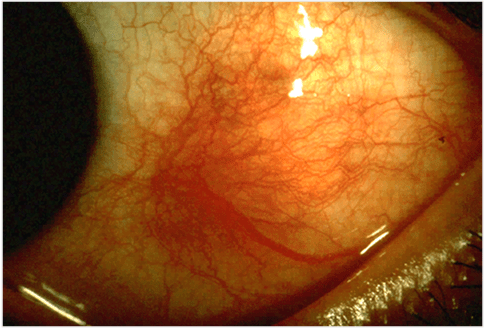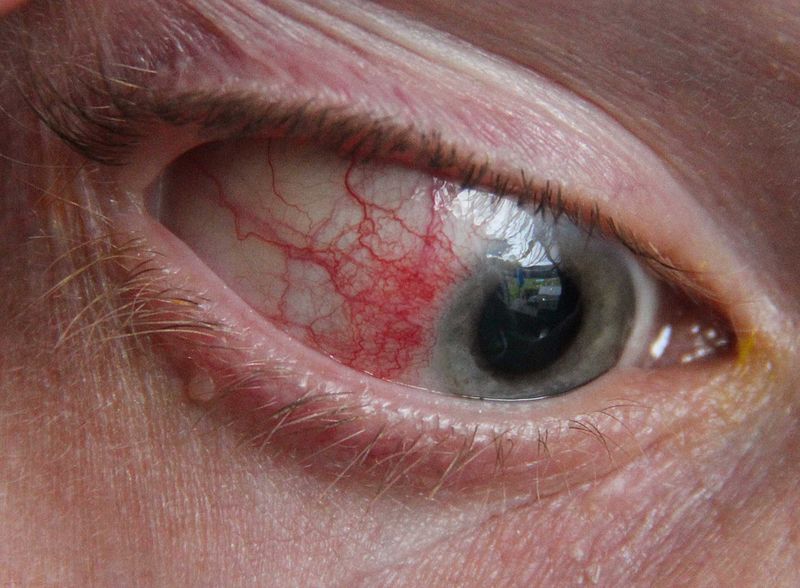Difference Between Scleritis and Episcleritis
Key Difference – Scleritis vs Episcleritis
The key difference between Scleritis and Episcleritis is that Scleritis, which often occurs in association with autoimmune diseases, is an inflammatory disease that affects the white outer coating of the eyeball (sclera) whereas Episcleritis is a benign, self-limiting inflammatory disease affecting the episclera (Episclera lies between the outermost layer of the conjunctiva and the sclera). In rare cases, episcleritis may be caused by scleritis.
What is Scleritis?
Scleritis or the inflammation of the sclera is a serious condition often associated with many autoimmune conditions affecting the body. It affects the protective connective tissue covering of the eye, therefore, If left untreated, it can lead to perforation of the eyeball (Scleromalacia). Commonly associated symptoms of scleritis include redness of the sclera and conjunctiva, severe eye pain, photophobia (difficulty in looking at light) and tearing. It may lead to a decrease in visual acuity and blindness. Scleritis can be caused by infections as well. It can be detected by examining the sclera in daylight. Other aspects of the eye examination such as visual acuity testing and slit lamp examination may be normal.
Scleritis can be differentiated from episcleritis by using phenylephrine or neo-synephrine eye drops, which causes blanching (collapsing of blood vessel causing a reduction in redness) of the blood vessels in episcleritis, but not in scleritis. In very severe cases of scleritis, eye surgery must be performed to repair damaged corneal tissue. For less severe cases, non-steroidal anti-inflammatory drugs, such as ibuprofen, are given to relieve the pain. Scleritis can also be treated with an oral corticosteroids (e.g. prednisolone) or using steroid-containing eye drops. In some cases, antibiotics may be prescribed. In more aggressive cases chemotherapy (e.g. systemic immunosuppressive therapy drugs such as cyclophosphamide or azathioprine) may be used in the treatment.

What is Episcleritis?
Episcleritis is a common condition, and it is demarcated by the sudden onset mild eye pain and redness. Although most cases do not have an identifiable cause, it can also be associated with autoimmune diseases or systemic vasculitis. The redness of the eye in episcleritis is due to engorgement of the large episcleral blood vessels, which run in a radial direction from the limbus (margin of the cornea and conjunctiva). Typically, there is no uveitis (Inflammation of the inner chambers if the eye), or thickening of the sclera. A bluish color of the sclera suggests scleritis, rather than episcleritis. This is because in scleritis deeper tissues are involved, and, therefore, inner contents of the eyeball are exposed. Often, treatment is not necessary for episcleritis as it is a self-limiting condition. Artificial tears may be used to help with irritation of the eye and discomfort. However, more severe cases can be treated with either topical corticosteroids (eye drops) or oral non-steroidal anti-inflammatory drugs. Overall prognosis is good in episcleritis.

What is the difference between Scleritis and Episcleritis?
Definition of Scleritis and Episcleritis
Scleritis: Scleritis is referred to as the inflammation of the sclera.
Episcleritis: Episcleritis is referred to as the inflammation of the episclera.
Characteristics of Scleritis and Episcleritis
Cause
Scleritis: Scleritis is a common association of autoimmune diseases.
Episcleritis: Episcleritis is a less common association of autoimmune disease, and the cause is often not found.
Symptoms
Scleritis: In scleritis redness and pain is more.
Episcleritis: In episcleritis radial pattern of blood vessels becomes prominent and symptoms are less severe.
Signs
Scleritis: Scleritis causes bluish color on the eyeball.
Episcleritis: Episcleritis does not cause bluish color on the eyeball.
Investigations
Scleritis: Phenylephrine or neo-synephrine eye drops do not cause blanching in scleritis.
Episcleritis: Phenylephrine or neo-synephrine eye drops cause blanching in episcleritis.
Complications
Scleritis: Scleritis can lead to blindness.
Episcleritis: Episcleritis does not cause blindness or involvement of the deeper layers.
Treatment
Scleritis: Scleritis needs treatment with non-steroid anti-inflammatory drugs and steroids.
Episcleritis: Episcleritis is a self-limiting condition and often does not require any treatment.
Prognosis
Scleritis: Scleritis can have a bad prognosis.
Episcleritis: With episcleritis prognosis is often good.
Image Courtesy: “Scleritis” by Kribz – Own work. (CC BY-SA 3.0) via Wikimedia Commons “Episcleritiseye” by Asagan – Took the picture myself. (CC BY-SA 3.0) via CommonsncG1vNJzZmivp6x7pbXFn5yrnZ6YsqOx07CcnqZemLyue8OinZ%2Bdopq7pLGMm5ytr5Wau26%2FwqWcq6GknsBurc2dZK%2BrXZq9qr%2FCpZyroaSewHA%3D